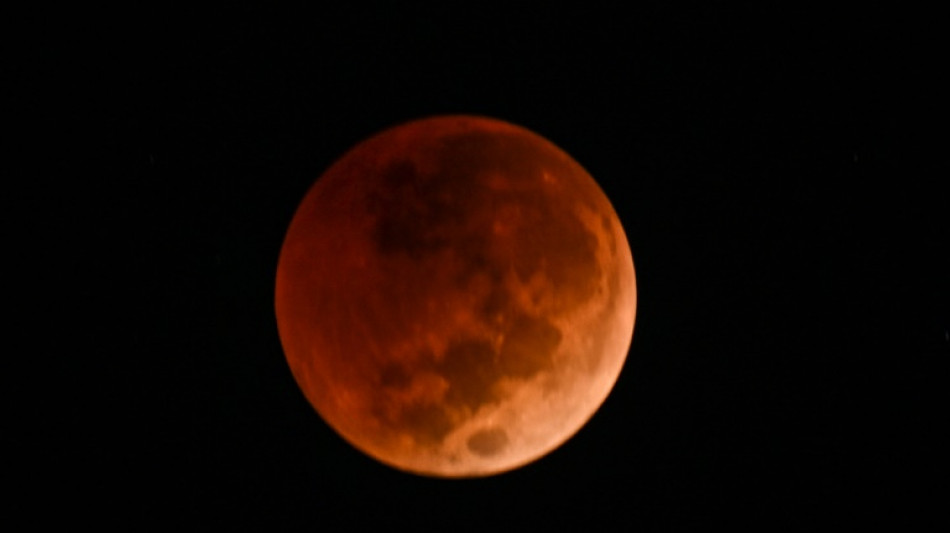
SCS
0.0200

A "Blood Moon" will bathe a large swathe of the world in red light overnight Thursday during a rare total lunar eclipse.
Skygazers will be able to witness the celestial spectacle in the Americas and Pacific and Atlantic oceans, as well as in the westernmost parts of Europe and Africa.
The phenomenon happens when the Sun, Earth and Moon line up, causing our planet to cast a giant shadow across its satellite.
But as the Earth's shadow creeps across the Moon, it does not entirely blot out its white glow -- instead the Moon turns a reddish colour.
This is because the only sunlight that reaches the Moon is "bent and scattered" as it goes through Earth's atmosphere, Daniel Brown, an astronomer at the UK's Nottingham Trent University, told AFP.
It is similar to how the light can become pink or red during sunrises or sunsets on Earth, he added.
And the more clouds and dust there are in Earth's atmosphere, the redder the Moon will appear.
The lunar eclipse, which will last around six hours on Friday morning, "is an amazing way to see the solar system in action", Brown said.
The period when the Moon is completely in Earth's shadow -- called the totality -- will be just over an hour.
This particular event has been dubbed the "Blood Worm Moon", after one of the names given to March full moons by some Native Americans.
- When can you see it? -
In North America, the moon will start to look like a bite is being taken out of it from 1:09 am Eastern Time (0509 GMT), then the totality will be from 2:26 am to 3:31 am, according to NASA.
In France, the totality will be from 7:26 am to 8:31 am local time (0626-0731 GMT), according to the French Institute of Celestial Mechanics and Ephemeris Calculation.
However only the most western parts of Europe, such as France's Brittany region, will get any chance to see the totality before the Moon sets.
People in New Zealand will have the opposite problem, with the eclipse only partially visible as the Moon rises.
In the United Kingdom, the weather forecast is poor but Brown said he hoped to "snatch a peak at the Moon with clouds above the horizon".
Brown dislikes the term "Blood Moon", saying it has a negative connotation and "originates from a misinformed theory of the end of the world".
But not all societies took a negative view of these celestial shows.
Some people in Africa traditionally viewed a lunar eclipse as a conflict between the Sun and Moon that could be resolved by people "demonstrating on Earth how we work together" and laying old feuds aside, Brown said.
"An amazing story that should inspire us all at the moment," he said.
- Solar eclipse soon -
It will be the first total lunar eclipse since 2022, but there will be another one this September.
Thursday's event will be a "Micromoon", meaning the Moon is the farthest away it gets from Earth, making it appear about seven percent smaller than normal, according to the website Earthsky.
This is the opposite of a "Supermoon", as was seen during 2022's lunar eclipse.
Some skygazers will be in for another treat later this month -- a partial solar eclipse, which is when the Moon blocks out the Sun's light on Earth.
This eclipse will be visible on March 29 in eastern Canada, parts of Europe, northern Russia and northwest Africa.
Viewing even a partial solar eclipse with the naked eye is dangerous, and people advised to use special eclipse glasses or pinhole projectors.
U.Ptacek--TPP